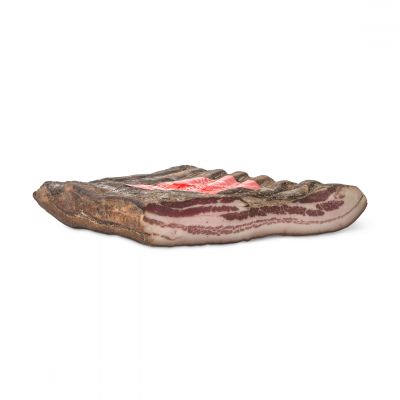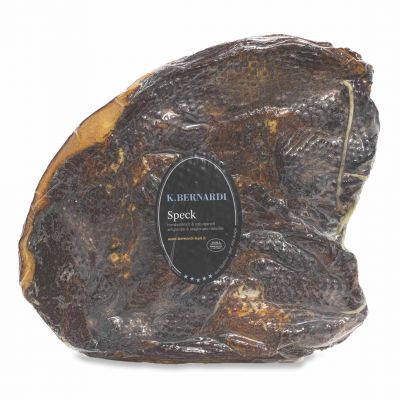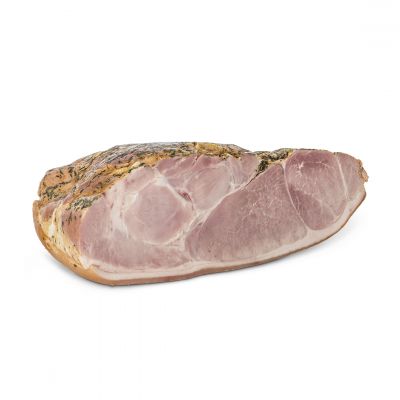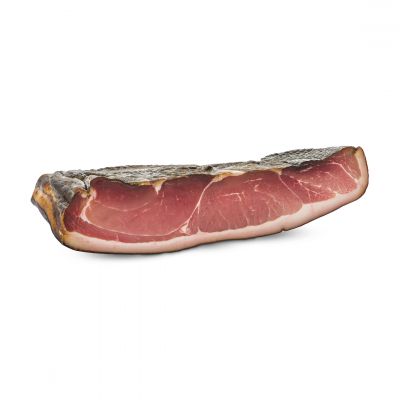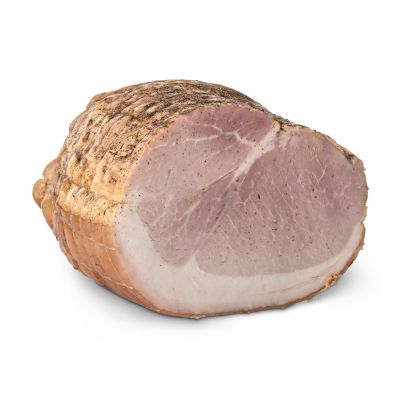A pleasant return at Karl Bernardi’s to rediscover how he produces his speck and to take with us some of his overwhelming energy
⏱ 4 MINUTES READING
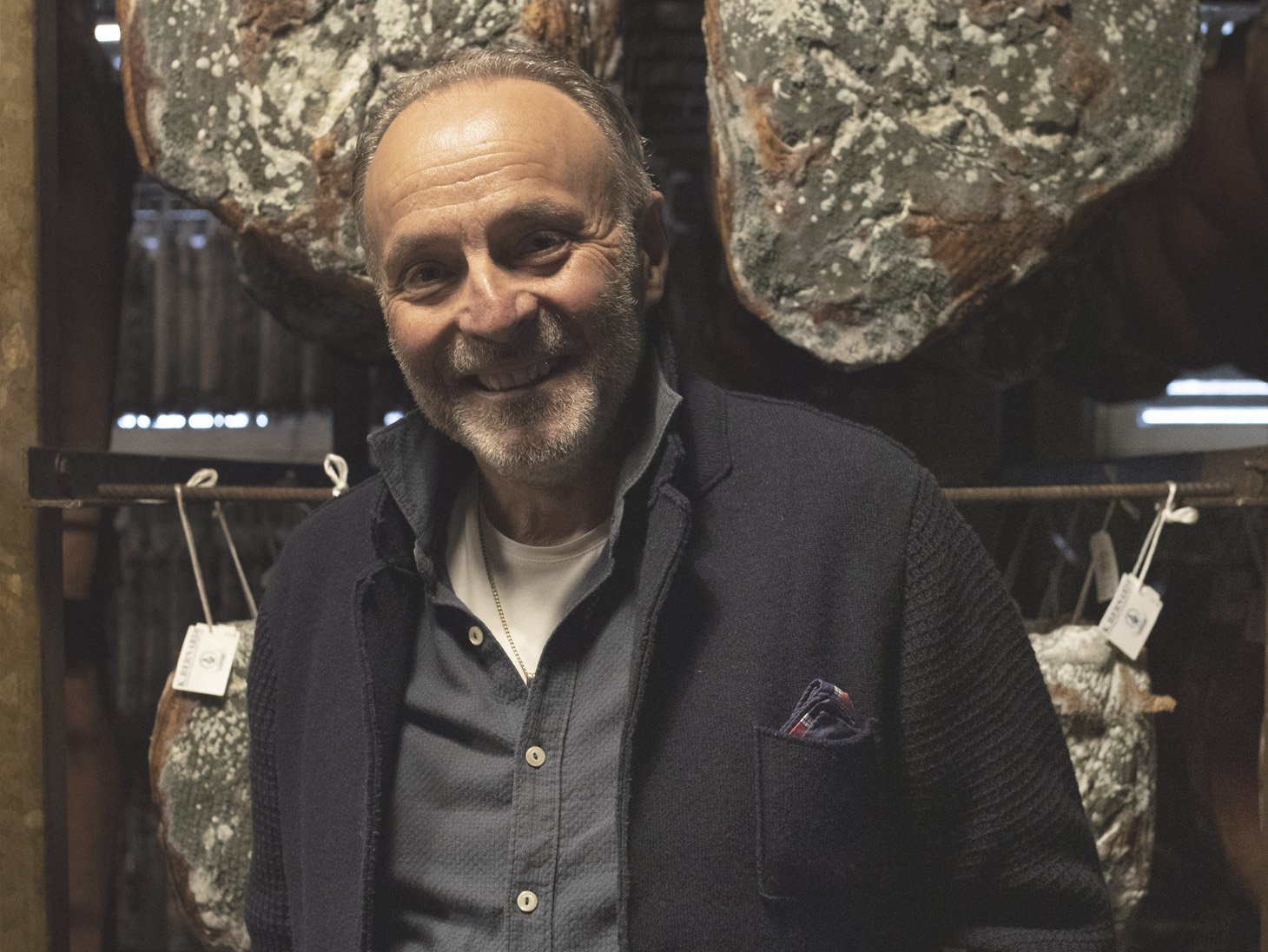
So I would call this article, with a pun, paraphrasing the song by the Italian songwriter Sergio Endrigo “Ci vuole un fiore”. Strong is the link between the speck and the man that has characterized and personalized it. Strong and direct is also the impact of the choices made by the producer on the finished product, as is strong in nature the link between a seed and the fruit that it generates.
We are used to tell you the stories of the producers, but when we write about Karl Bernardi it is not easy to moderate emotion and suggestion. We have known each other for years, perhaps more than twenty, our companies have grown together and the chats have always been interesting, and different are the things to tell.
So, after the stagnation cause by the lockdowns, in May we resumed our beloved visits to the producers (even the ones that are further away). Among the firsts we visited there was Karl.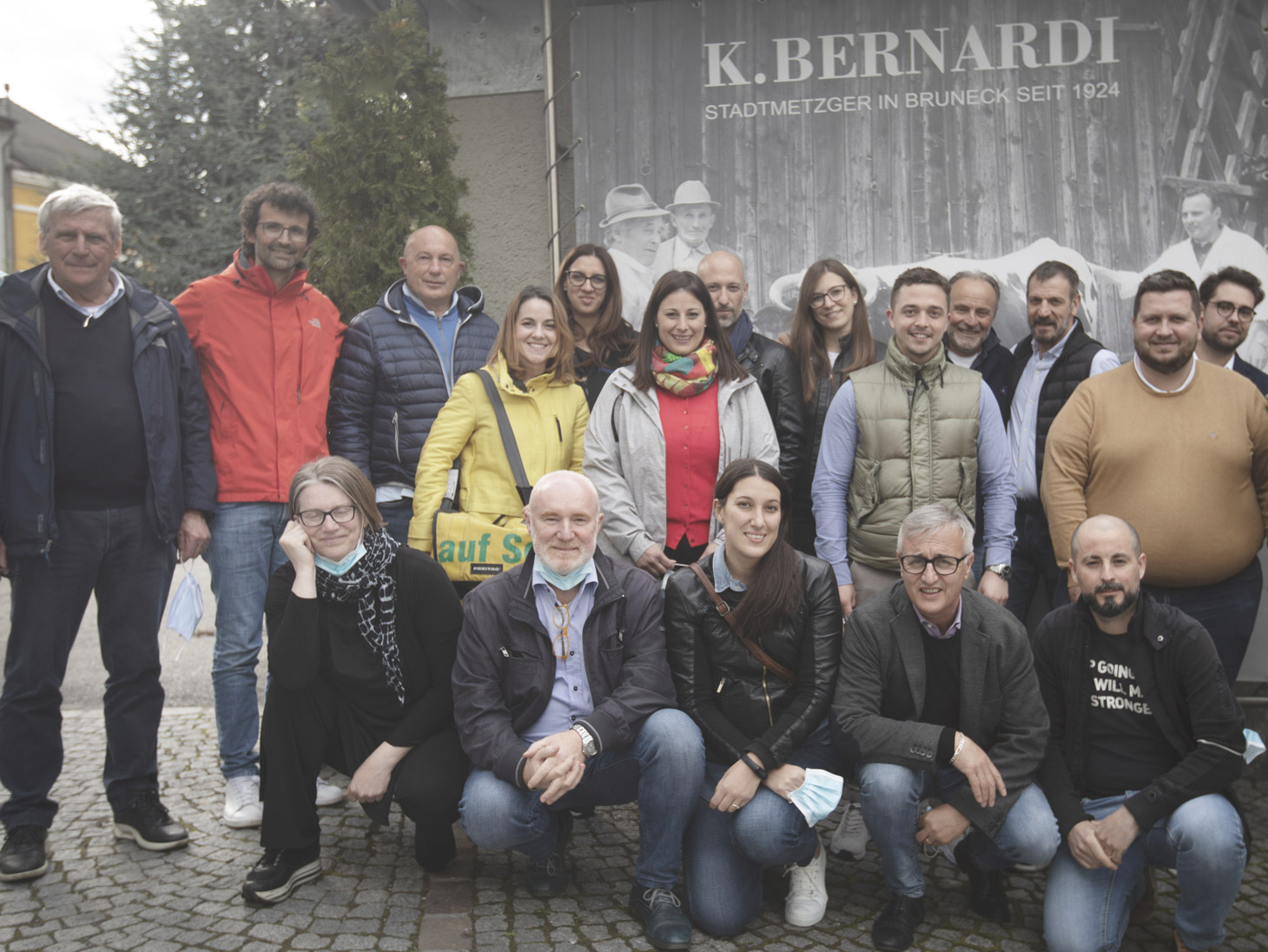
We checked in on him in Brunico (Sudtirol) on a Saturday morning, together with the whole sales department with the primary aim of getting back in touch with the craftsman, but also with his main product, the Speck. We felt the need to strengthen the awareness of our most experienced sellers towards an absolutely different and first-class product, but also to make it known to the newcomers.
The welcome was excellent: Karl gathers us in a circle in the square in front of the wine bar and welcomes us by quickly telling us his idea of speck and the three main things he has worked on in recent years.
First of all, the raw material, which comes solely from German farms, which receive an important attention both with regard to the freshness of the meat (by controlling the Ph at the reception), and towards farming methods that must not be intensive, and finally the slaughter, who must follow an ethic code.
Second, the shape of the finished product: Karl reminds us how he changed the cut of the thigh and consequently the final appearance of the speck over the years thanks to the feedback received from customers, so as to allow the customer to have less irregularities, less trimming, and therefore less scrap and more cutting surface.
Finally, smoking, a decisive process to define the quality of a speck. Well, Karl found that smoking should not be a single, continuous and therefore invasive process, but should find a way to let the product absorb the smoke slowly and so he “patented” a resting and smoking cycle method using only local woods. But here I can’t say more…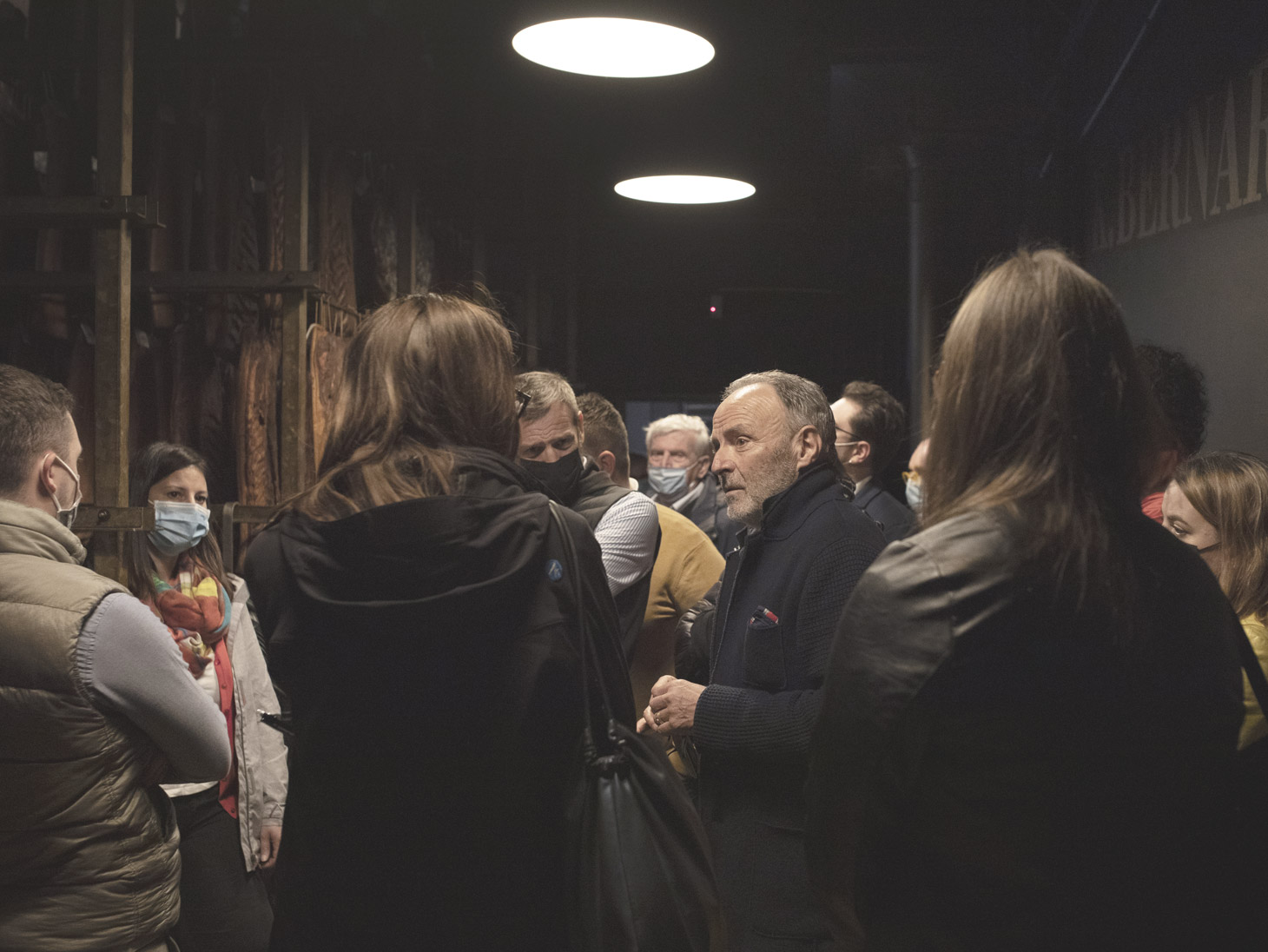
Rather, I will try to tell you how the second part of the visit went, when we were taken inside the ripening rooms, first, and then in the production department.
The speck rests together with other cured meats in an old mill, next to the course of the river Rienza, restored respecting the styles and times of the past. The proximity of the river, mind you, is not accidental: it guarantees the right mix of humidity and air flow that is perfect for the drying of a sausage.
Slow, gradual drying, which must never become forced drying. The Speck of Bernardi differs for this reason, for a maturation always over 7 months, necessary to eliminate the moisture of the meat, but also to ensure digestibility and organoleptic finesse.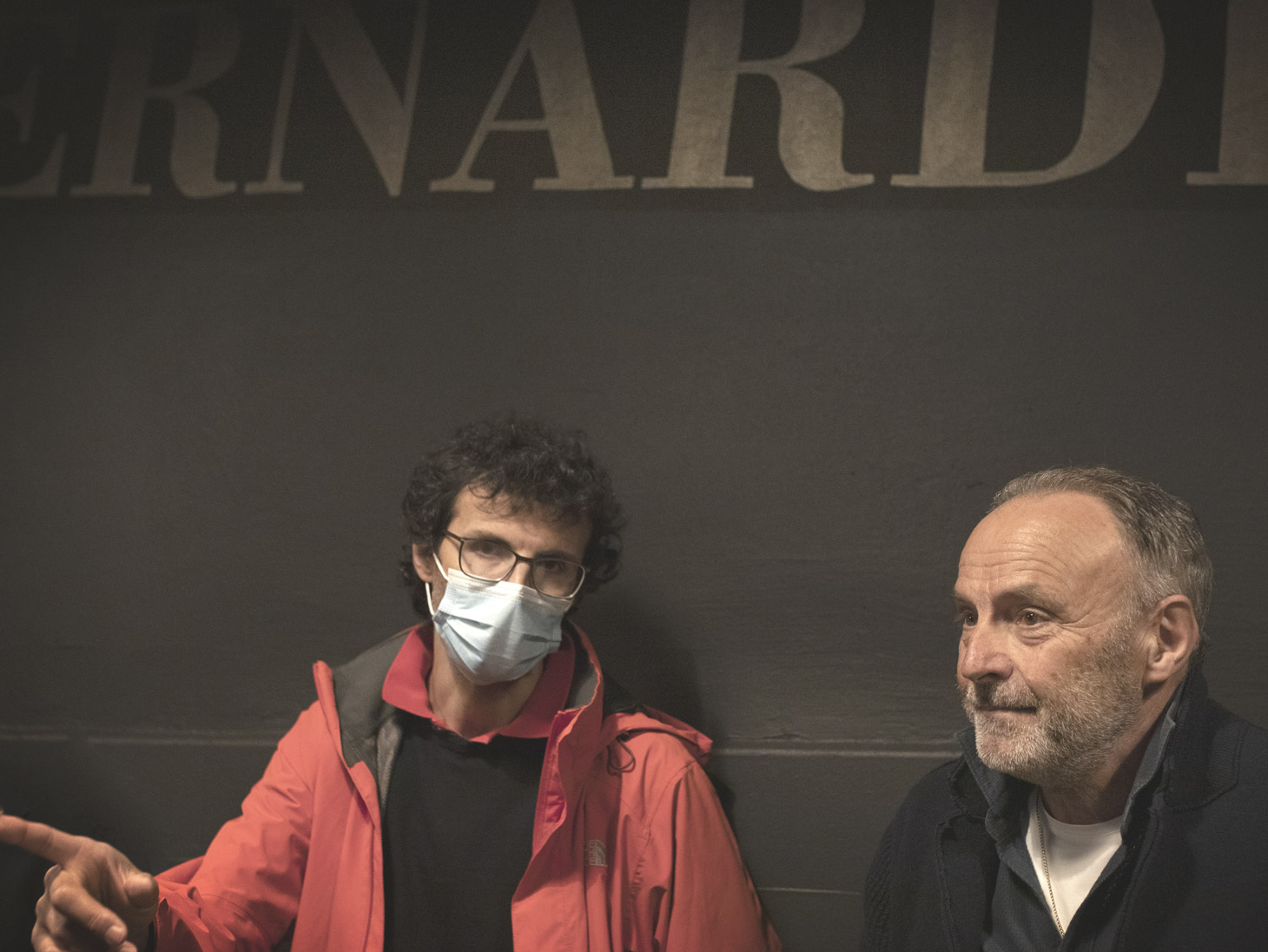
It is evocative to enter in the building in these aging cells, all painted black, recalling the smoke, from the high ceiling and slightly painted, and on the other side seeing the old offices of the mill and also the living rooms of the millers with the always fascinating stube. And it is right inside these cells that the cover photo of Karl is taken among his creations. I think that the cover speaks for itself and can tell better than this article the charisma and the energy of this man. Really awesome.
And finally, between the corridors and subsequent stairs we move to the production laboratory, below the wine cellar. Here Karl receives the pork legs in bone (sometimes even half-carcases) that after being deboned pass to the stage of salting and tanning.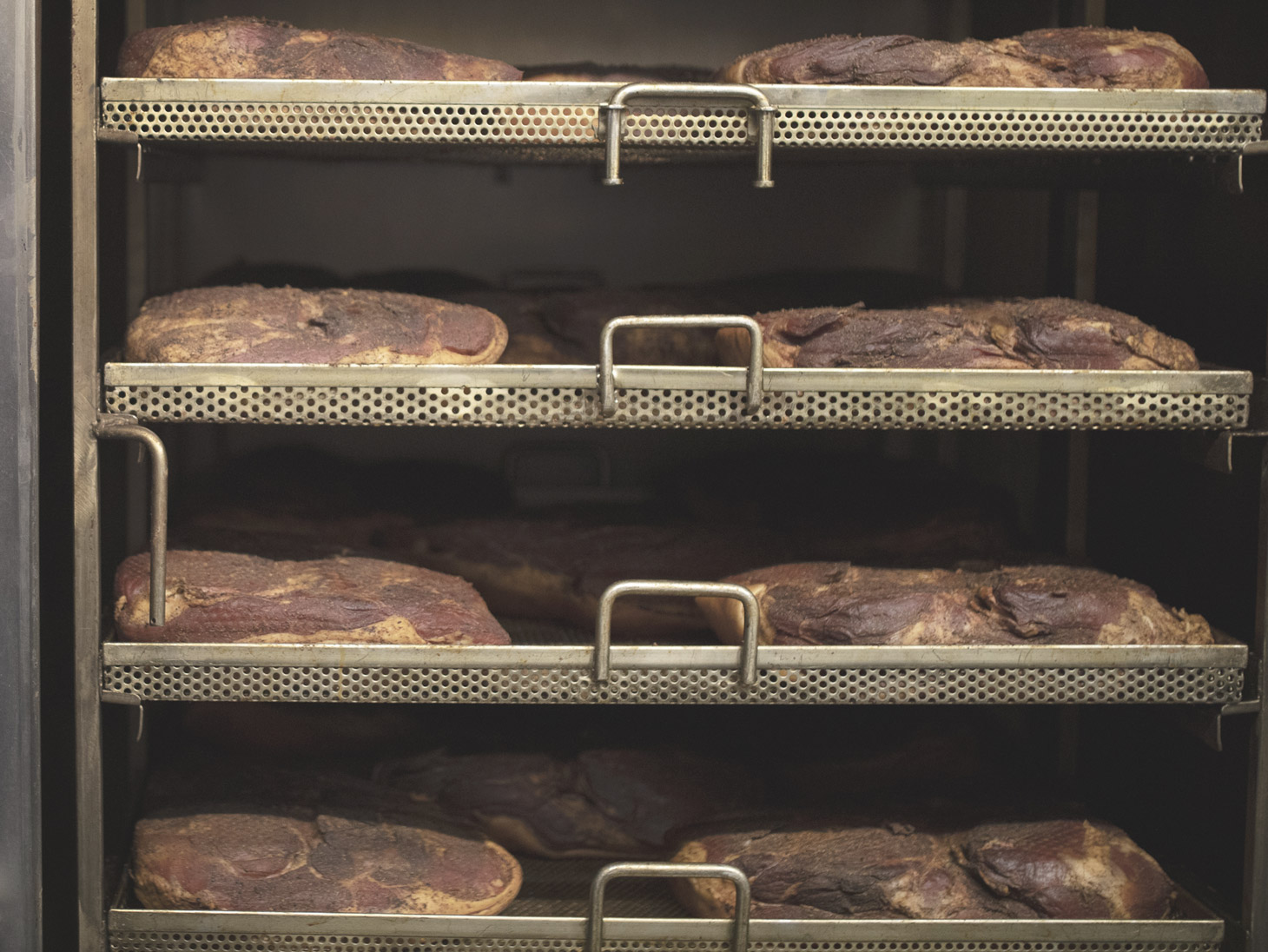
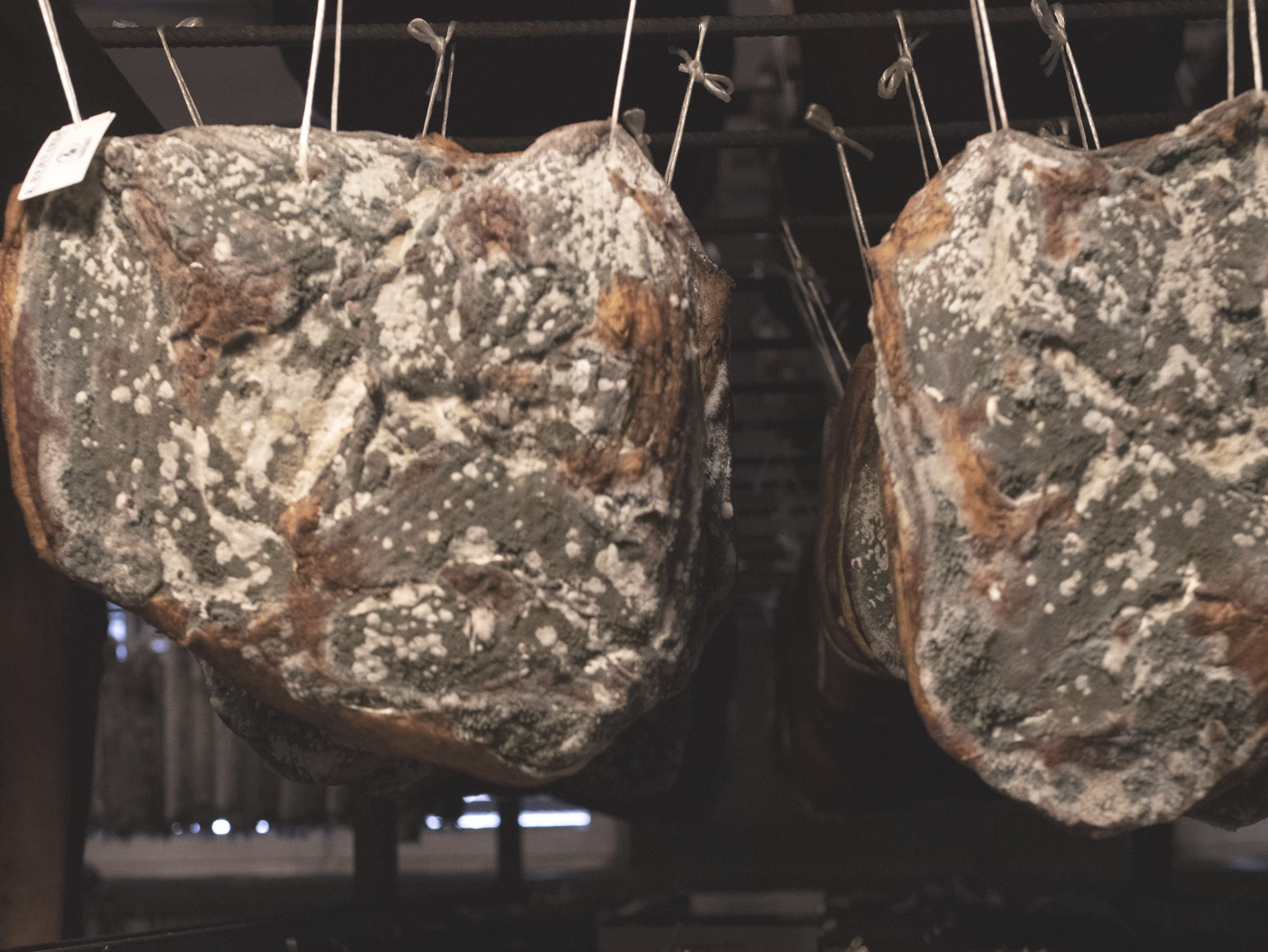
It is a dry salting that lasts about 4 weeks and turns into brine due to the natural release of moisture contained in the meat. The thighs are turned inside the tanks once a week in order to take salt and flavours in a homogeneous way. At the same time the product is tanned with cumin, coriander, pepper and especially juniper, as well as a pinch of nitrite.
Then comes the moment of smoking in a special oven, where there are gently alternating phases of cold smoke and rest of the meat, for a total duration of the process that comes close to the whole day.
The thigh acquires a brown colouration and is ready to start the phase of maturation that will never last less than 7 months. These months are necessary for the meat to complete the ripening process, acquire a dry fiber and a fine and elegant flavour, and find that balance between fat and lean mandatory to obtain an excellent product.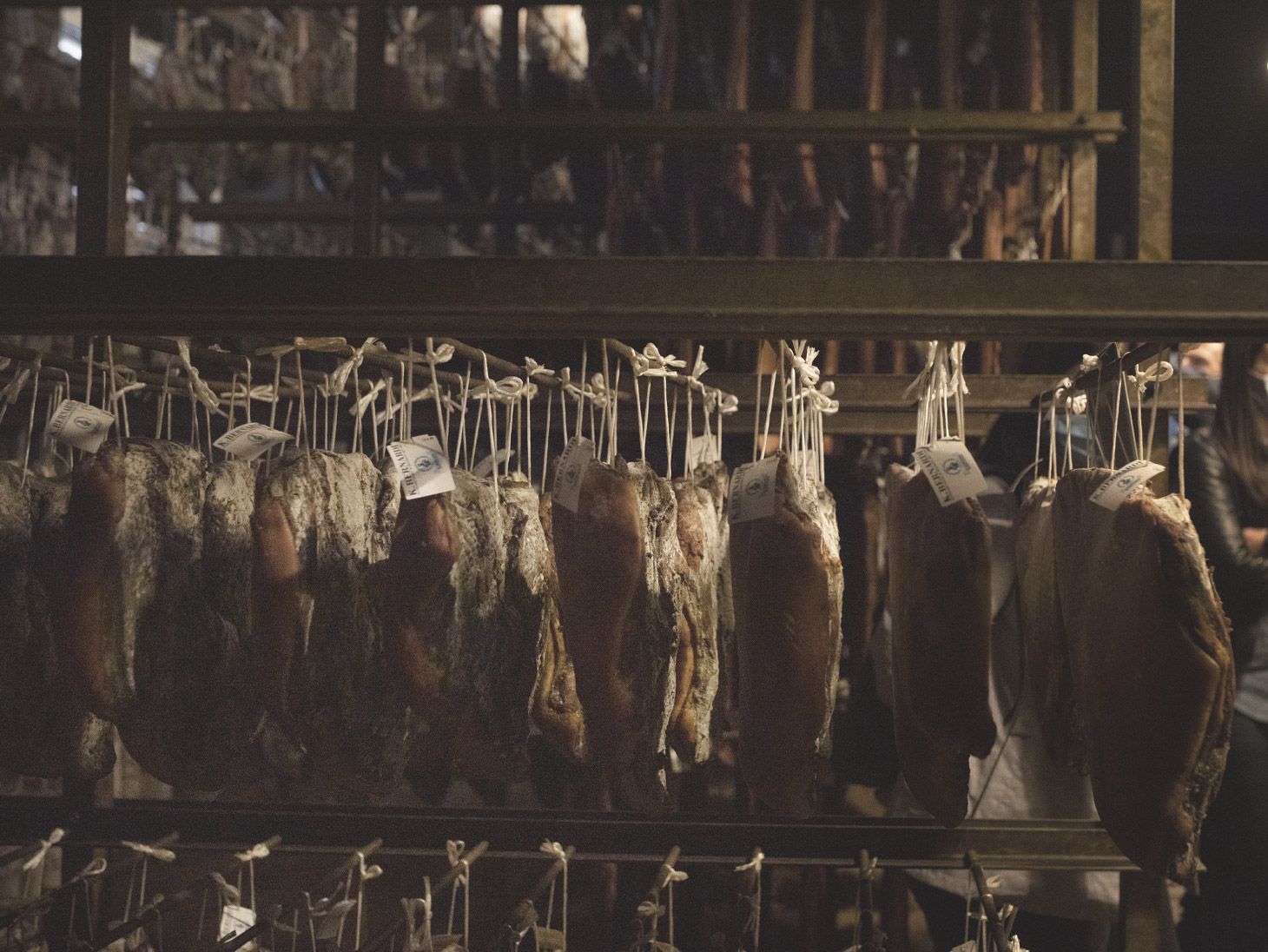
In the last few years it has become increasingly harder to find speck that have at least one finger of fat between meat and rind (we talk about the ideal ratio 3:1 between lean and fat), and even with Karl’s speck we have had hard times on this concern. However, since several months this problem has also been solved and the speck portrayed in these photos can be considered representative of Bernardi’s quality.
The visit ends in a great way, with an open-air lunch with potato salad and sausages, a roundup of cold cuts of the house, the gulasch soup and a great company! After the coffee we get back on the road and we carry in our hearts a renewed confirmation: behind a great product there is always a great producer!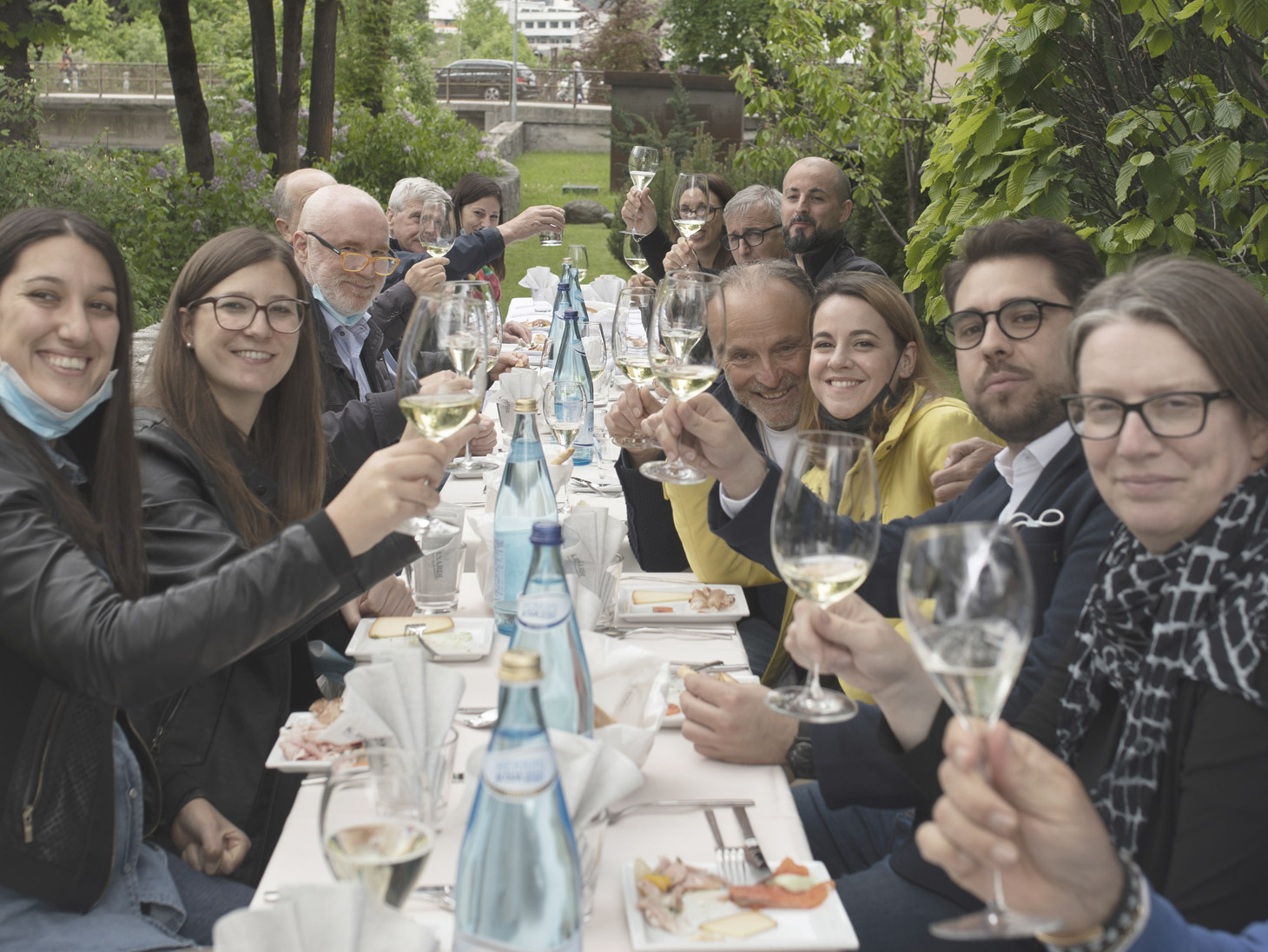
Alessandro De Conto
Sales Director




